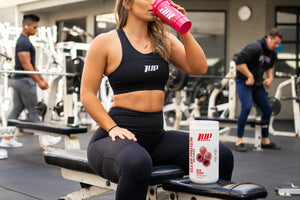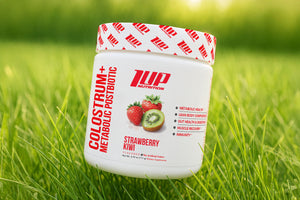Let’s be real. No matter how clean we try to eat or diligently we track our macros, we all have sugar cravings (which can be a real challenge during your transformation challenge).
Depending on which fitness influencers feed you’ve encountered, you’ve either been told to be ashamed of your sugar cravings (because sugar is “bad”) or fully embrace it without guilt (because the “anti-diet” is the way to go).
The truth is that neither ideology is correct, and, truth be told, few things that paint such black and white pictures are. There’s nuance, subtlety, and understanding to all issues in life, including how to understand sugar cravings and get them under control.
Let’s discuss…
How to Handle Sugar Cravings When Dieting
#1 Maintain Consistent Meal Times
One of the biggest reasons we crave something sweet is that we miss a meal. This could be due to being busy with work, family obligation, or intentionally skipping it. Whatever the reason, the result is the same -- you become ravenous (on account of no food in your system and low blood sugar), which invariably leads you to seek out sugar to boost energy levels and restore blood sugar to a healthy level.
The solution to this is to maintain regular meal times each day. Ideally, you’d want to space your meals out every 3-5 hours (depending on individual preference and calorie needs). This not only helps maintain stable blood sugar levels and keeps sugar cravings at bay, it also keeps a steady supply of essential amino acids and BCAAs in the bloodstream to support muscle recovery and growth!
#2 Don’t Ditch Carbs
It’s become popular in recent years to eschew carbohydrates. Depending on the source, you’ll hear everything from carbohydrates make you fat and stop weight loss all the way to reducing life expectancy.
The reality is that all carbohydrates are not the nutritional ne’er-do-wells they’re made out to be by the low-carb, paleo, and keto communities. They are actually quite healthy and contain high amounts of essential vitamins, minerals, and antioxidants. Case in point, fruits, vegetables, and whole grains. Plus, carbohydrates are the body’s preferred source of energy, especially during intense physical activity (e.g. resistance training, crossfit, HIIT, etc.).
You see the issue isn’t that carbohydrates are bad, it’s the type of carbohydrates you eat.
Highly processed and refined carbohydrates (chips, crackers, candy, cookies, breakfast cereal, etc.) don’t come with the water, fiber, or micronutrient content of fruits, veggies, and whole grains. This means they are rapidly digested causing insulin and blood sugar levels to spike and then quickly fall...leading to the much-despised “sugar crash.” To fix this, many people quickly turn to eating more sugar, which just feeds the cycle over and over again.
As such, you don’t need to ditch carbohydrates, you should minimize your intake of hyper-processed carbohydrates and simple sugar and have the majority of your carbohydrate intake come from whole food sources -- fruits, veggies, whole grains, nuts, seeds, and legumes.
#3 Have Some Sugar
Building off of the last point, we said that you should minimize your intake of simple sugar and refined carbohydrates, but you don’t have to eliminate them.
Completely eliminating foods (or entire food groups) can lead to an unhealthy relationship with food as you start looking at foods as morally “good” or “bad.”
Quite often when individuals take such a drastic (and frankly unnecessary) stance, it can lead to worse cravings, feelings of low mood, or abandoning a diet altogether.
Understand that it is OK to have some sugar every now and then. For instance, if you’re at Aunt Millie’s birthday party and there’s cake and ice cream, feel free to have some. Or, if you just finished a really hard workout, it’s ok to have a cheat meal or some candy (skittles, gummy bears, etc.).
After a workout, glycogen is depleted and insulin sensitivity is high, making it the best time to consume simple carbs (note: this is the reason we created Tri-Carb, it contains three fast-digesting carbohydrates to replenish muscle glycogen, boost recovery, and stop muscle breakdown following training).
The takeaway here is that you don’t need to completely eliminate sugar and sweets from your diet to get results during your transformation challenge. By allowing yourself to occasionally enjoy something sweet, you’ll help keep cravings and feelings of deprivation underwraps, which means greater adherence to your diet and ultimately better results!
Takeaway
Having cravings and getting hungry is natural. You don’t need to feel ashamed or guilty, but it does help to try to understand why you’re feeling hungry or craving something sweet. When these sensations surface, take a second to think why you’re feeling this way. Have you been eating regularly? Are you fueling your body with quality foods? Drinking enough water? Etc.
If you’re doing all of those things and still feeling a bit hungry, then it may be helpful to look into an appetite suppressant to reduce cravings and help keep feeling full until it’s time to eat.
And last, but not least, make sure that if you are trying to lose weight to track your calories using the 1UP FItness app. This way you’ll know if you’re eating in line with your goals (muscle gain, fat loss, body recomposition, etc.). Tracking your calories and macros also helps you fit in those sugary treats you might have a craving for without going over your calories for the day, too!






